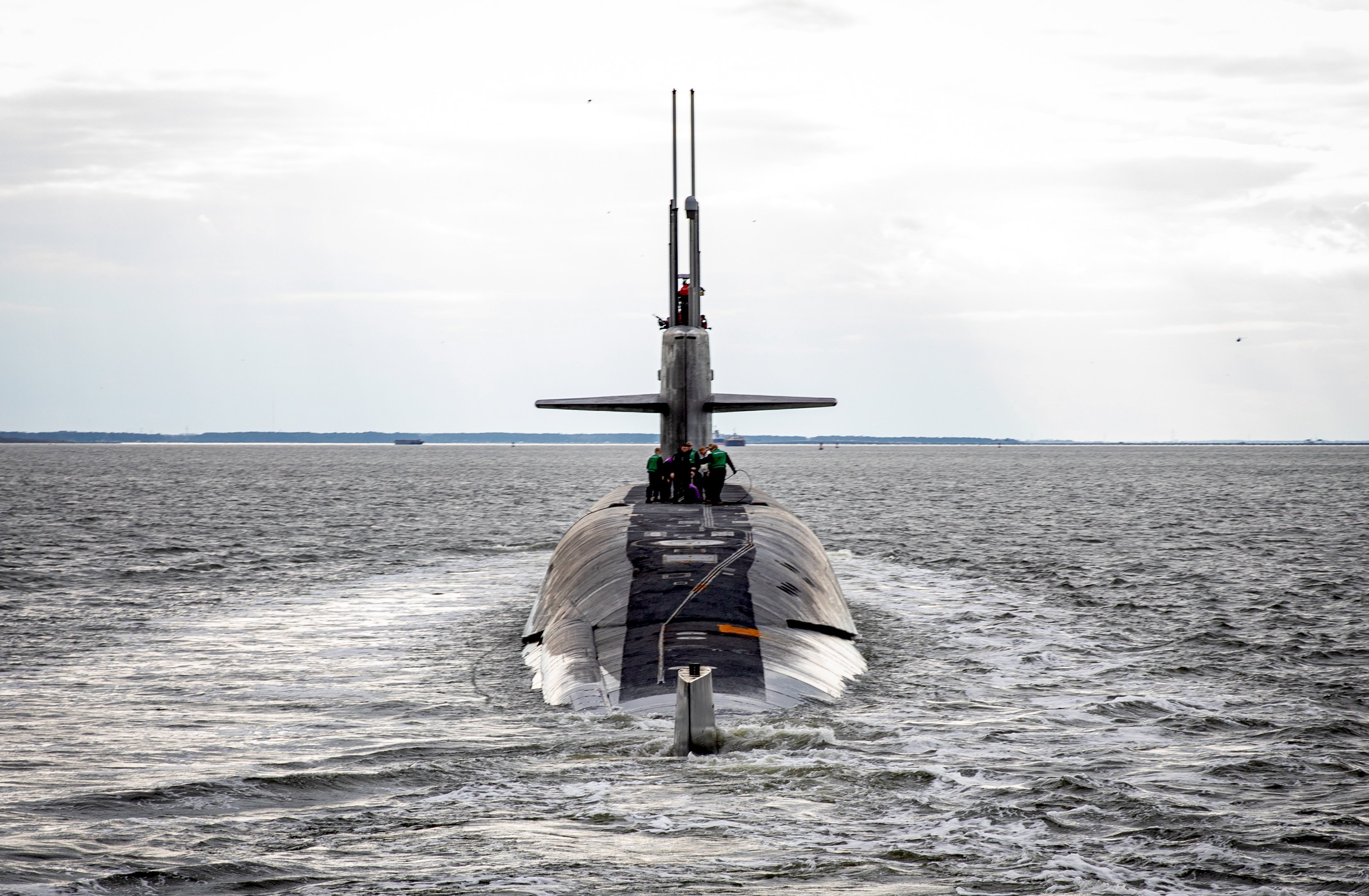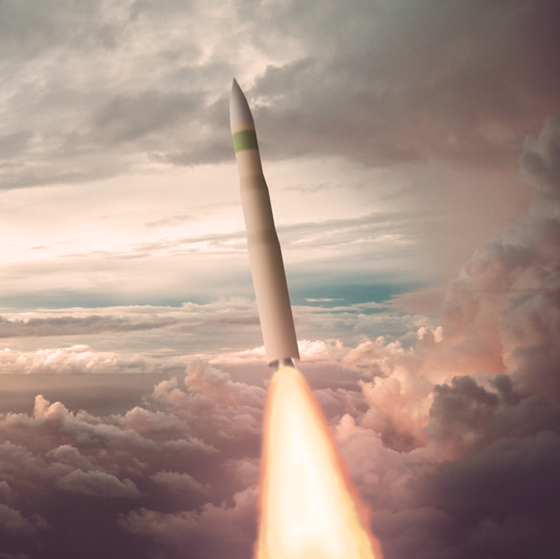
Strategic Command’s commander pledged to “ensure there is no gap” between the delivery of the Columbia-class ballistic-missile submarines and the complete retirement of the Navy’s leg of the nuclear triad in the 2040s.
But STRATCOM needs resources to keep the Ohio-class SSBNs and its Trident II D5 missiles viable if there are delays in building and delivering the new ballistic-missile submarines, Air Force Gen. Anthony Cotton told the Senate Armed Services Committee.
“We are late to need” in all parts of nuclear triad modernization programs, he said, also referring to the land-based ballistic missiles and the air leg. He assured the panel the command would keep legacy systems ready if production falls behind scheduled delivery.
In his prepared testimony, he acknowledged that the Ohio-class “faces continuing sustainment challenges that impact its availability until fully replaced” in 2042.
Complicating legacy systems’ maintenance and providing money for new builds like the Columbia-class is Congress’ failure to pass a Fiscal Year 2024 budget, Cotton said. The latest stopgap spending bill, which expires March 8, for the Pentagon included a $3.3 billion exception for the new ballistic-missile sub class. That exception for the Navy’s top priority would need to be included in any other temporary spending bill to continue funding the program.
There is the possibility that Congress will not be able to pass a defense appropriation by Sept. 30, the end of the fiscal year.
“If we are faced by a full year continuing resolution, we want to prioritize readiness first of all [supporting combat operations in the Red Sea], people, and people secondly. And what that means is taking risk in investment programs,” Undersecretary of the Navy Erik Raven said.
The $100 billion Columbia program is the Navy’s top acquisition priority.
When asked, Cotton said he didn’t need more money to keep Columbia on schedule. The delay problem lies in the shipyards’ “wicket.” Public and private shipyards are struggling to attract and keep a trained workforce to build new ballistic missile subs and maintain the existing fleet.
The shipyard workforce problem and aging facilities are being felt in building and maintaining the surface fleet and attack submarines. The White House recently announced a $20 billion program to upgrade yard and port infrastructure, but that work will take years to finish. A bipartisan group of legislators introduced a bill to speed and coordinate military and civilian yard modernization projects by creating a “maritime czar,” reported USNI News.
“We have to be very creative in the manpower issue,” Cotton said, answering a question on the impact of keeping to the Navy’s schedule to build attack boats for the United States and Australia, as well as Columbia.

In the prepared testimony on developing that workforce for Columbia and Sentinel, the next-generation land-based ballistic missile, Cotton wrote that it “includes ensuring the right throughput for trade schools and producing skilled technical labor, such as technicians proficient in concrete work, welding, and rebar fabrication. The success of the major levels of effort in ballistic missile programs in the 1960s, like the Polaris missile program and the Minuteman project, driven by an energized whole-of-government approach, serves as a historical precedent.”
“We are the only combatant command that can’t have a gap in capability,” Cotton said several times during the hearing.
Space Command’s commander Gen. Stephen Whitney, testifying at the same hearing, said Russia’s invasion of Ukraine has shown how its military relied on space and space operations in waging war. In prepared testimony, he said there is “a vulnerability window communicated by our competitors and highlighted as we watch conflict unfold in Ukraine and Israel where missile defense and space capabilities have been tested by the quantity and quality of missile and counterspace systems.”
Whitney added Chinese advances in space and counterspace operations have been “breathtaking.” In using that word, he was echoing the description Strategic Command’s Cotton and his predecessor used to categorize Beijing’s expansion of its nuclear arsenal and deploying an air-, land- and sea-based triad. By 2030, China could “achieve world-wide status in all but a few space technology areas,” he warned.
He wrote in prepared testimony Beijing’s goal is to match or pass the United States across the board in space technology by 2045.
Traditionally U.S. space “forces have been optimized for a benign environment,” he said.
Noting the importance of electromagnetic dominance in the Ukraine war, committee chair Sen. Jack Reed, (D-R.I.), said, “we have seen large swatches of the battlefield … rendered inoperable due to GPS denial for precision weapons, as well as the disabling of commercial satellite systems that both militaries use.”
Whitney said these are lessons the United States and allies are taking from the conflict.
He told the committee that although the Kremlin has suffered heavy equipment and manpower losses in Ukraine, this does not mean Russia is pulling back in space. He called the threat “formidable and less predictable.” He predicted Russia would rely more heavily on nuclear, cyber and space to achieve strategic goals.
Whitney said in written and oral testimony that both Russia and China are developing disruptive technologies to wreak havoc on U.S. and allies space operations, including ground- and space-based weapons. National Security Council spokesman John Kirby in early February confirmed Russia’s work on a possibly nuclear-armed weapon to destroy orbiting satellites.
China is also “developing and testing hypersonic glide vehicles. …These capabilities are intended to overcome U.S. traditional missile warning and ballistic missile defense systems,” Whitney wrote. The Missile Defense Agency was moved from Strategic Command to Space Command last April.
Sen. Angus King, (I-Maine), told the two witnesses that he believes “we should have a presence [of directed energy and laser weapons] in the Red Sea now to shoot down Houthi drones and cruise and ballistic missiles.
“We’re using $2 to $5 million missiles to knock down $200,000 drones.”





